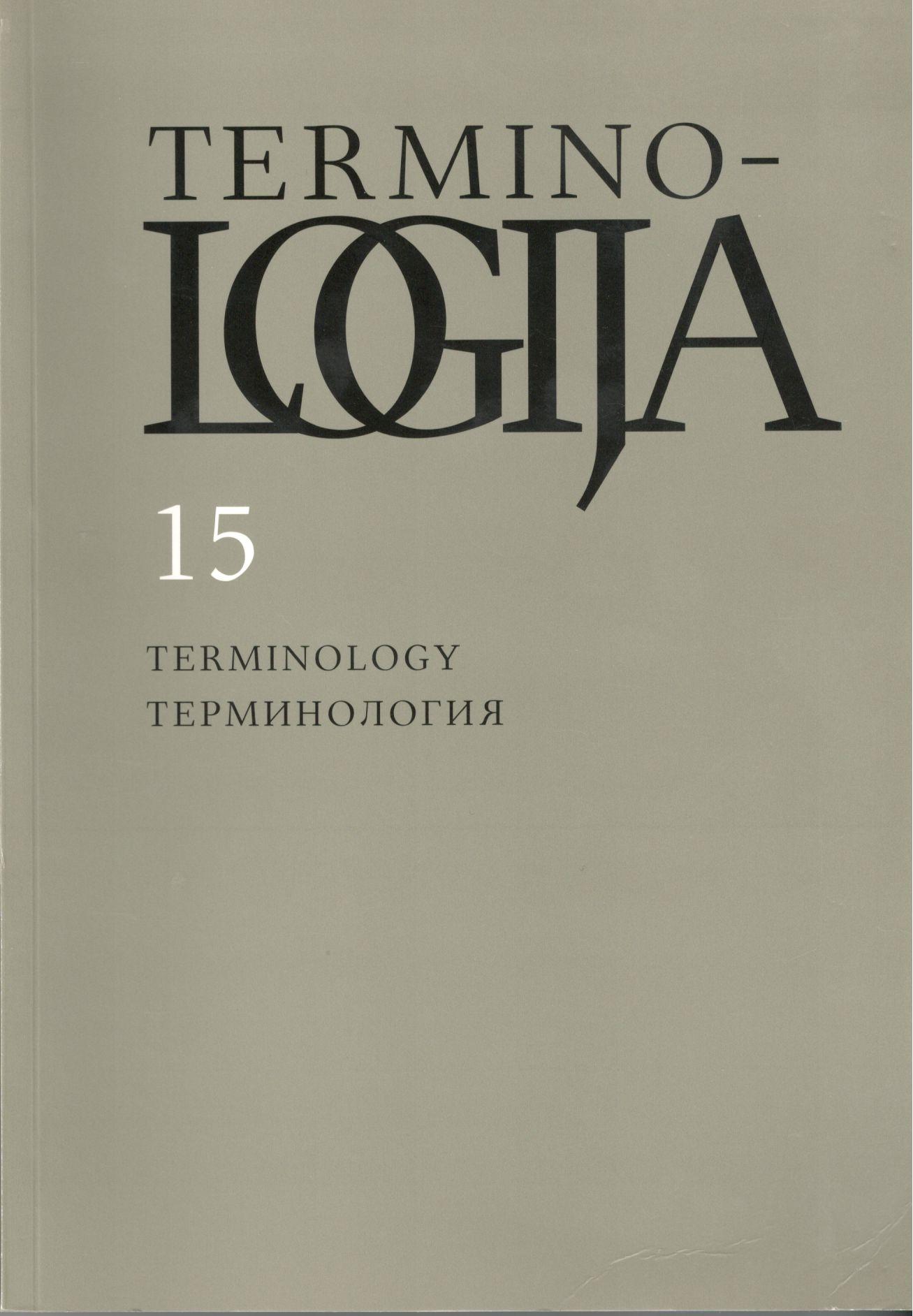Lietuviški Vinco Kudirkos medicinos terminai
Lithuanian medical terms of Vincas Kudirka
Author(s): Palmira ZemlevičiūtėSubject(s): Language and Literature Studies, Lexis, Semantics, Descriptive linguistics, Baltic Languages, Health and medicine and law, Philology
Published by: Lietuvių Kalbos Institutas
Keywords: history of medical terminology; medical term;
Summary/Abstract: The rise of the movement of Lithuanian national rebirth at the end of the 19th century speeded up the publication of works in Lithuanian. Popular books, booklets, articles in newspapers and almanacs on various issues of medicine became more numerous. One of the doctors who was educating people on health issues was a famous Lithuanian public figure Vincas Kudirka (1858–1899), In Varpas magazine he published four articles in the field of hygiene – “Arbata” (“Tea”) (1889), “Kava” (“Coffee”) (1889), “Tabakas” (“Tobacco”) (1889) and “Alkoholis ir alkoholizmas” (“Alcohol and alcoholism”) (1895).This article deals with medical terms of the Lithuanian origin in the above-mentioned writings of Vincas Kudirka. Such terms comprise up to 70% of terms used by him. 40% of them are still being used (akis (eye), dusulys (shortness of breath), džiova (tuberculosis), gerklė (throat), gydymas (treatment), gydytojas (doctor), kraujas (blood), kūdikis (baby), kvėpavimas (breathing), ligonis (patient), sveikata (health), vaistas (medication) and others) and 60% fell out of usage in modern language of medicine.Vincas Kudirka used quite a lot of Lithuanian names for body parts and organs, which did not take root in the language – akies baltymas ‘odena’ (white of the eyes), ašarinis takas ‘ašarų kanalėlis’ (tear duct), auda ‘audinys’ (tissue), dantų smegenys ‘dantenos’ (gums), dirgsnis ‘nervas’ (nerve), grumulas ‘liauka’ (gland), indas ‘kraujagyslė’ (blood-wessel), jungplonė ‘konjunktyva’ (conjunctiva), lėliukė ‘akies vyzdys’ (pupil), pilvaplonė ‘pilvaplėvė’ (peritoneum), plonė ‘plėvė’ (membrane), saldmėsės ‘kasa’ (pancreas), slidplonė ‘gleivinė’ (mucous membrane), sunkė ‘arterija’ (artery). All these words are given in Lietuvių kalbos žodynas (Dictionary of the Lithuanian language) in the meanings used by Kudirka and the majority of them have illustrative examples from the earlier-mentioned writings of Kudirka. There were also some Lithuanian names of diseases, their symptoms, medical conditions and other terms related to medicine used by Kudirka which did not take root in the language either, for instance apjakimas ‘apakimas’ (loss of sight), duosnė ‘dozė’ (dose), galvos sopimas ‘galvos skausmai’ (headache), gyvastis ‘gyvybė’ (life), limpanti liga ‘infekcinė liga’ (contagious disease), styris ‘tetanas, ilgalaikis raumens susitraukimas’ (tetanus), žlėbčiojimas ‘virškinimas’ (digestion). Kudirka, like other doctors, used to give Latin equivalents next to some Lithuanian medical terms, for instance džiova (phthisis) (tuberculosis), kasa (pancreas) (pancreas), vilkas (lupus) (lupus) and other.Kudirka’s articles are important sources of the history of Lithuanian medical science and Lithuanian medical terminology. Kudirka contributed to the creation of Lithuanian medical terminology, though he did not make a special effort in this. The majority of the words he tried to use as medical were words of folk language. He was not content with borrowings, but was looking for Lithuanian equivalents to name medical concepts and created some Lithuanian medical terms as a result. According to the data from Lietuvių kalbos žodynas and Jonas Palionis thesis Lietuvių literatūrinės kalbos normalizacija XIX a. pabaigoje (1880–1901) (Normalization of the Lithuanian standard/literary language at the end of 19th century) (1952) terms jungplonė ‘konjunktyva’ (conjunctiva), pilvaplonė ‘pilvaplėvė’ (peritoneum), slidplonė ‘gleivinė’ (mucous membrane), sunkė ‘arterija’ (artery), sunkinis kraujas ‘arterinis kraujas’ (arterial blood) and other terms could have been created by Kudirka, but they did not take root in the modern language of medicine.
Journal: Terminologija
- Issue Year: 2008
- Issue No: 15
- Page Range: 142-155
- Page Count: 14
- Language: Lithuanian

